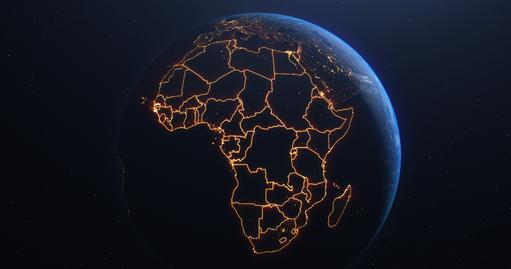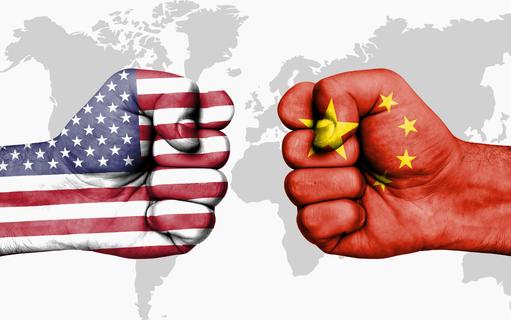|
"When you fail to reach your goals don’t adjust your goals, adjust your actions"
On Saturday 20th October 2022, the Chinese Communist Party (CCP) ended its twice-a-decade Congress. It amended its charter and elected Xi Jinping for a historic third 5-year term, making him China's most powerful ruler since Mao Zedong, the founding leader of the People's Republic. Given these outcomes, followers of HealthPad suggested we re-publish the Commentary, ‘Learn from the Chinese, but don’t misjudge Beijing’, which we do below. The Commentary describes the tightening of China’s regulatory and competitive environments and suggests that Western corporations, with interests in China or thinking of entering the Chinese market, should not underestimate: (i) the large and growing differences between China and the US, and (ii) the CCP’s uncompromising ambition to become economically self-reliant, a world superpower and a global high-tech leader. Deteriorating East-West relationships Xi Jinping used the Congress to tighten his hold over the CCP by evicting all remnants of factional opposition, placing political allies in key positions and establishing complete control over the Party and the country. Xi re-emphasized the significance of making science and technology cornerstones of China’s strategy for national economic and military “self-reliance”. He also hinted that China will further decouple its economic links with the US and Europe and increase market restrictions on Western companies trading in China. With Xi’s increased authority and China’s increased global power and influence, it seems reasonable to assume that, in the near-term, China is likely to develop a more aggressive foreign policy, and the US and its Western allies will doubtless respond with a more confrontational approach to China. This significantly raises the possibility that East-West geopolitical relationships will deteriorate further.
Guanxi China and the Chinese are different to the West and Westerners. Whereas most Western nations, have a deep sense of individualism based on democracy with social and political freedoms, China and the Chinese are rooted in Confucian collectivist principles with a top-down hierarchical structure that views individuals as part of a community with ordered and friendly relationships. This is perhaps best understood by the Chinese term, ‘Guanxi’ (关系), which refers to tacit mutual commitments, reciprocity, and trust, and is central to all personal, business, and politico-economic relationships. China’s ambition None of China’s renewed global posturing should surprise Western corporate leaders with their fingers on the pulse of their international strategies. For decades China has been increasing its power and influence in the world. In his 2017 report to the 19th Party Congress, Xi Jinping stressed the decline of America’s international authority and the “substantial and rapidly growing” global power and influence of China. He predicted that, by the mid-21st century, China will have become “a global leader in terms of comprehensive national power and international influence,” and will be a development model for the world. The past 5-years Also in 2017, Xi advocated a more aggressive and activist Chinese foreign policy, and over the ensuring 5 years, Beijing has: (i) weakened foreign enterprises trading in China and raised the bar for new entrants, (ii) strengthened Chinese domestic companies and incentivized them to trade internationally, (iii) ratcheted-up pressure on Taiwan, (iv) exerted greater control over Hong Kong, and (v) increased China’s rhetoric and tactics in defence of its interests.
Business-as-usual versus strategically active Over the past 3 decades, China has strategically invested in innovation-driven development, which has helped the nation improve its core competitiveness, and significantly shape its international leadership role. During this time, many Western companies with interests in China have been strategically passive and pursued ‘business-as-usual’ policies, which often meant they: (i) continued to invest in products and services that had been overtaken by technology and were losing market share, (ii) were relatively slow to invest in emerging technologies and develop new offerings, (ii) tended to fixate on their initial success and failed to quickly recognise that something new was replacing it, and (iii) focused scarce resources on short-term performance rather than long-term value. For many corporates, such policies resulted in missed commercial opportunities and weakened global competitiveness.
Reducing the healthcare gap Over the past decades while many Western companies have been strategically passive, China, by contrast, has been strategically active, aggressively developing innovative and technologically advanced solutions to narrow its healthcare gaps caused by increased healthcare demand and shrinking numbers of healthcare professionals. Witness Chinese start-ups that rapidly grew to become significant companies by leveraging data and artificial intelligence (AI) to develop digital healthcare solutions that enhanced patient outcomes and reduced costs. Examples include: WeDoctor, Alibaba Health, JD Health, DXY.cn. and Ping An Good Doctor. These, and other digital innovations, provide a range of health services including, online consultations, hospital referrals and appointments, health management, medication regimens, medical insurance, and wellness and prevention programmes. Such initiatives have provided vast numbers of Chinese citizens with easier access to healthcare and enhanced patients’ therapeutic journeys while reducing vast and escalating healthcare costs and shifted many healthcare services out hospitals into peoples’ homes. Hospital services shifting to the home This shift is nothing new and not exclusively Chinese. Twelve years ago, Devi Shetty, a world-renowned heart surgeon, was emphasising the impact that digitalization would have on traditional hospital based services. In just 2 decades, Shetty built Narayana Health (NH), India’s 2nd largest hospital group. In 2019, Narayana was recognised by Fortune Magazine as, “one of the world’s most innovative healthcare providers”. In 2000, Shetty, like his Chinese counterparts, was emphasising that the “next big thing in healthcare is not going to be a magic pill, or a faster scanner, or a new operation. The next big thing in healthcare is going to be IT, which will change the way a health professional will interact with the patient. Every step of patient care will be dictated by a protocol stored on a handheld device. That will make healthcare safer for the patient and shift most hospital activities to the home. The doctor and patient can interact regardless of time and place”. See video.
 Two types of capitalism The difference between Western and Chinese corporates reflects two different types of capitalist systems: liberal meritocratic capitalism in the West, and state-led authoritarian capitalism in China. In the former, the emphasise on quarterly reporting and the time, effort and costs associated with it tends to encourage short-term performance while the latter creates more opportunities for generating long-term value. There is plenty of evidence to suggest that when executives consistently invest in long-term strategic objectives their companies’ productivity increases, they generate more shareholder value, create more jobs, and contribute to higher levels of economic growth than do comparable companies that focus on the short-term performance. Data also suggest companies that implement effective environmental, social and governance (ESG) strategies, which address the interests of all stakeholders, achieve better long-term value. Fink criticizes business executives In 2014, Laurence Fink, chairman of Black Rock, the world’s largest asset manager, criticized Fortune 500 CEOs for their focus on short term corporate behaviour. While recognising the market pressures on company executives, Fink said, “It concerns us that many companies have shied away from investing in the future growth of their companies” and increasingly engaged in actions that “deliver immediate returns to shareholders, such as buybacks or dividend increases, while underinvesting in innovation, skilled workforces, or essential capital expenditures necessary to sustain long-term growth”. Takeaways Western corporate leaders are challenged to devise ethical strategies that create long-term value rather than just short-term performance. Following Fink’s suggestions policies to create long-term value might include: (i) developing a suite of strategic initiatives expected to deliver returns that exceed the cost of capital (ii) allocating resources to initiatives that create most value, (ii) focusing on generating value not only for shareholders but for all stakeholders, and (iii) resisting actions that only boost short term profits.
|
|
|
- China is the world’s second largest economy after the US
- Its MedTech sector is the world’s second largest after the US and accounts for 20% of the global market
- The size of China’s market is attractive to Western MedTechs but its regulatory and competitive environments are changing, which makes it more challenging for foreign corporations to enter or grow their franchises in China
- China’s healthcare system has similar structural challenges as those of the US and other wealthy nations: the demand for care is increasing and overwhelming health professionals, which creates care gaps
- China is ahead of the US and other nations in attempting to reduce such gaps with patient-centric innovative digital therapeutic solutions, which is supported by a deep bench of capabilities
- Western MedTechs have a lot to learn from Chinese digital health innovations
- However, Beijing is engaged in an unprecedented mission to become a self-reliant, high-tech economy and a world superpower within the not-too-distant future
- Misjudging Beijing can have significant commercial consequences
Learn from the Chinese, but don’t misjudge Beijing
An earlier Commentary ended by posing the question whether Western MedTechs can compete with China’s large and rapidly growing domestic medical device industry, which benefits from China being the second largest MedTech market in the world behind the US, with annual sales revenues of ~US$84bn in 2020. China now accounts for ~20% of the global medical device market, which is expected to continue an upward trajectory, supported by the nation’s quickly aging population, rising incomes, and the continued enhancement of health services.
With this foundation, Beijing is incentivising its domestic MedTech companies to expand internationally. Beijing’s 14th Medical Equipment 5-Year Plan (2021–25) sets a goal to have >6 Chinese MedTechs among the top 50 global industry corporations by 2025. The policy complements Made in China 2025, which is a macroeconomic strategy to reduce China’s reliance on imported foreign products including medical devices. So, while China’s domestic market is becoming more challenging for foreign MedTechs, Beijing is supporting the growth and expansion internationally of its local medical device companies to compete with their Western counterparts. For example, Mindray Medical International, China’s biggest medical device corporation by sales revenue, is the #4 ultrasound vendor in the world and over the next 5 years, expects to increase its overseas sales revenues from <50% today to ~70%.
Despite Beijing’s ‘for China’ policies, many Western MedTech leaders view China as a significant commercial opportunity, recall foreign corporations that have prospered in the nation over the past two decades and suggest that it is important to do business there if one of your company’s objectives is to grow its international franchise. But China has changed, and its regulatory and competitive ecosystems are tightening, which present headwinds for Western MedTechs that were not present a decade ago. Further, China has an ambition to become a self-reliant, world leading high tech nation in the not-too-distant future, which could have consequences for foreign companies participating in the Chinese market.
With ~400m chronic disease patients, a fast-aging society, vast and rapidly rising healthcare costs, and an economy that has slowed, China is resolute in developing a new model of digitally enabled, patient-centred integrated healthcare. This ambition is supported by significant resources and a deep-bench of capabilities positioned to enable China to achieve its goals, which include transforming its medical devices sector by supporting the development of world class, high tech, patient-centric, digital enterprises.
All these factors suggests a dilemma for Western MedTech leaders: China is too big to ignore, but Beijing is too powerful and unrelenting to misjudge.
In this Commentary
This Commentary has 3 sections. The first, entitled ‘Reducing care gaps with digital therapeutic innovations’, suggests that China, the US, and other developed nations share a common challenge of care gaps created-by a limited supply of health professionals and a large and increasing demand for care. China’s attempts to resolve these gaps differ from other nations in their scale and nature. They are nationwide innovations predicated upon digital AI strategies, which manifest themselves in digital platforms that directly address patients’ healthcare needs. We briefly describe a few examples of these and suggest that they are advantaged by China’s data policies and AI competencies. Section 2, entitled ‘Capabilities’, describes Beijing’s plans for China to become the world’s leader in AI technologies within the next decade and suggests that China has the capabilities to achieve this goal in the proposed timeframe. The final section entitled, ‘Understanding Beijing’, briefly describes the tightened regulatory and competitive environments and suggests how this impacts the business models of Western corporations seeking to enter the Chinese market or increasing their existing franchises. We posit that China and the Chinese are significantly different to Western democracies and Westerners and emphasize the Chinese Communist Party’s uncompromising ambition to become economically self-reliant, a world superpower and a global high-tech leader. Misjudging Beijing could be commercially damaging for foreign corporations.
1: Reducing care gaps with digital therapeutic innovations
China has similar structural healthcare challenges to the US and other developed economies, which manifest themselves in care gaps caused by a limited supply of overworked healthcare professionals and a vast and rapidly growing demand for care from aging populations. The Chinese population ≥65 years is ~140m, and this cohort is expected to grow to ~230m by 2030. By that time, the nation’s aging middle class will have grown from today’s ~0.3bn to ~0.7bn. High-risk behaviours like smoking, sedentary lifestyles, and alcohol consumption as well as environmental factors such as air pollution take a huge toll on health and increase the demand for care. According to Statista, a large portion of the Chinese population suffer from chronic lifestyle diseases, which account for >80% of the nation’s ~10m deaths each year; >0.5bn people are overweight or obese, while high blood pressure is a common illness among >0.4bn people. China’s healthcare expenditure is growing at >8% a year, and without reform, the nation’s health spending could increase to >US$2trn by 2030. Such factors, together with the nation’s economic slowdown motivate Beijing to prioritize the transformation of its healthcare system.
|
|
|
Significant differences in tackling care gaps
A significant difference between China and the US and other wealthy nations, whose healthcare systems are all in need of reform, is that China has been quicker to develop digital therapeutic technologies to reduce care gaps and relieve its large and rapidly growing burden on hospitals, care systems and families caring for the sick and elderly.
|
|
In any healthcare system, people should be the priority, but because of a dearth of health professionals, overburdened hospitals, soaring health costs and overworked physicians, patients’ needs are often not prioritized. China has been no exception but expects to reverse this trend with the help of artificial intelligence (AI) enabled digital therapeutic solutions that put patients first. Examples include: WeDoctor, Alibaba Health, JD Health, DXY.cn. and Ping An Good Doctor. These, and other digital innovations, provide a range of health services including, online consultations, hospital referrals and appointments, health management, medication regimens, medical insurance, and wellness and prevention programmes. China’s early adoption of AI medical solutions has benefitted from Beijing’s “Healthy China 2030” policy, which, since its launch in 2016, has directed substantial funds to Chinese AI start-ups developing technological innovations to ease the burden of care gaps. According to Tracxn, one of the world’s largest tracking platforms, there are ~227 AI driven healthcare start-ups in China. Let us briefly describe three established ones: WeDoctor, DXY.cn and Ping An Good Doctor.
WeDoctor
Tencent-backed WeDoctor, founded in 2010 to provide people with physician appointments, is based in Hangzhou, a city of ~11m and the capital of China’s Zhejiang province. Since its inception, the company has grown into a multi-functional platform offering a range of medical services predicated upon a database of >2,000 Western treatment plans, online pharmacies, health insurance, cloud-based enterprise software for hospitals and other services. Today, WeDoctor hosts >270,000 doctors and ~222m registered patients. It has an impact on reducing care gaps and is one of the few online healthcare providers qualified to accept payments from China's public health insurance system, which covers >95% of the population. WeDoctor's services are especially valued in rural areas, where there are fewer physicians than the national average of 1.5 per 1,000 people.
In response to the COVID-19 crisis the company launched the WeDoctor Global Consultation and Prevention Center (GCPC), which provided a free 24/7 global online health enquiry service, psychological support, prevention guidelines and real-time pandemic reports. Just before the pandemic, WeDoctor planned to float its medical and health service function on the Hong Kong stock exchange at a valuation ~US$7bn. However, it was pulled because of the Beijing-Hong Kong tensions. WeDoctor’s. other business functions, which include health insurance and health data services, were not included in its proposed flotation, and are likely to stay private to appease Chinese regulators.
DXY.cn
DXY.cn is an online healthcare community for doctors, patients, and healthcare organizations. It was founded in 2000 and is also based in Hangzhou. Over the past 2 decades it has evolved into the world’s largest community of physicians who use the platform to gain insights from colleagues, discuss new medical research, and report unusual clinical events. More recently, DXY has added a consumer-facing service that brings wellbeing advice and medical consultations to the public. DXY generates revenues from public-facing medical advertising and job recruitment for its life science clients, as well as clinics where patients can receive in-person medical care. According to TechCrunch, in 2021, DXY reached ~130m consumers, >9,000 medical organizations, and had a registered user base of ~20m.
Ping An Good Doctor
Ping An Insurance (Group), is one of the world’s largest financial services companies with >210m retail customers and ~560m internet users and is headquartered in Shenzhen, southeastern China. In 2014, it launched Ping An Good Doctor to provide end-to-end, AI-powered health services directly to patients. These include 24/7 online consultations, diagnoses, treatment planning, second opinions, and prescription management solutions. Today, Good Doctor has ~400m registered users and drives synergies across China’s healthcare ecosystem. The platform collaborates with >3,700 hospitals and is supported by an off-line healthcare network of >2,200 in-house medical staff and ~21,000 contracted experts to ensure quality and accuracy of its medical services. The company provides insurance coverage for both users and physicians, which helps to ease China’s healthcare payment pressures. Ping An Good Doctor’s technology also assists patients to manage their personal health records, treatment plans, and medical histories.
In 2019, the company launched the world's first AI-powered, un-manned healthcare service: the One-minute Clinic. This is a 3m2 booth, which patients walk into, enter their digitized medical history from their mobile phones, and add their symptoms. The clinic’s algorithms, which have been trained on data from >300m medical records, then make a diagnosis, prescribe drugs, and provide a treatment plan. Medications are purchased from an adjacent vending machine. Within a year of the start of the first clinic, Good Doctor rolled out ~1,000 units in shopping malls, airports and other public spaces throughout China providing onsite medical and pharmaceutical services 24/7. Today, the clinics provide accessible and affordable medical and health services to >3m users. Good Doctor believes that its AI-driven, un-manned clinics have a promising future helping to reduce China’s care gaps and has plans to expand its services into Southeast Asia. In December 2019, the company signed a strategic collaboration with Merck, an American pharmaceutical multinational to advance further intelligent healthcare in China.
Internet hospitals
Digital initiatives like those described above have led to the development and spread of internet hospitals, which are online medical platforms associated with offline access to traditional hospitals that provide a variety of services directly to patients. Today, internet hospitals are booming in China, driven jointly by government and market initiatives.
The first internet hospital was established in China’s Guangdong province in October 2014. It consisted of four clinics operated by doctors from the Second People's Hospital, an online platform operated by a medical technology company, and a network of medical consulting facilities based in rural villages, community health centres, and large pharmacy chain stores. Initially webcams were used for patients to communicate with physicians and share medical images of their conditions. A patient's vital signs were taken by on-site machines and uploaded onto the system. With all this information, physicians made a diagnosis and prescribed medications, which patients obtained from nearby pharmacies. According to the Lancet, two months after its launch, China’s first internet hospital “was dealing with ~200 patients and issuing ~120 prescriptions every day”. After six months, the number of patients had increased to >500 a day, ~60% of whom needed prescriptions. Soon afterwards, a network of consultation sites expanded to >1,000 facilities in 21 of Guangdong’s municipalities. In 2018, Beijing gave the legislative green light for internet hospitals, which prompted many Chinese digital health companies to start using internet-based AI solutions to meet the country’s medical and healthcare needs and contribute to the reduction of care gaps. By August 2021, >1,600 internet hospitals had been established in China. The public and physician acceptance of these and Beijing’s support for them suggests a new era in digital healthcare.
“Internet + Healthcare” initiatives
Since 2018, a range of “Internet + Healthcare” initiatives have consolidated and enhanced the position of digital healthcare innovations. The success and continual improvement of China’s digital health service platforms all benefit from Beijing’s policies to facilitate medical practice supported by digital tools. Laws and policies have been issued to support this digital transformation, including health data digitalization, data sharing, and interoperability across the whole of China’s healthcare ecosystem. After the outbreak of the COVID-19 pandemic, the government increased its “Internet + Healthcare” efforts to include telemedicine in state medical insurance coverage, and to lift barriers for prescribed drugs sold online.
Data advantage
Compared to the US and other Western democracies, China has significant data advantages to drive its digital healthcare initiatives. Eric Topol, a cardiologist, director of the Scripps Research Translational Institute, and author of Deep Medicine: How AI can make healthcare human again, argues that “China has a massive data advantage when it comes to medical AI research”. To put this in perspective, consider that Chinese patient healthcare data are drawn from the nation’s provinces, many of which have populations of >50m. By contrast, US AI research tends to be based on patient data often drawn from one hospital. China’s big data advantage allows machine learning algorithms to be more effectively trained to perform key functions in a range of clinical settings. Another comparative advantage of China is its large workforce of AI specialist, data scientists, and IT engineers, which can work on healthcare projects at comparatively low costs. This is partly the result of China’s emphasis over the past four decades to encourage science, technology, engineering, and mathematics (STEM subjects) in their schools and universities to fuel Beijing’s technological ambitions.
Not known for good data governance practices, but with intensions to expand internationally, China is now tightening its data protection regulations. For example, in November 2021 Beijing introduced the Personal Information Protection Law (PIPL), which is designed to prevent data hacks and other nefarious uses of sensitive personal information. Much like the EU’s General Data Protection Regulation (GDPR), the PIPL stipulates that an individual’s explicit consent must be obtained before their medical health data are collected, and it places the burden on medical AI companies to ensure that these data are secure.
2: Capabilities
Healthy China 2030
In October 2016, President Xi Jinping announced the nation’s Healthy China 2030 (HC 2030) blueprint, which put patient-centred healthcare at the core of Beijing’s healthcare plans, recognizing its ability to influence both social and economic development. The policy sets out China’s long-term approach to healthcare and shows the nation’s commitment to participate in global health governance, which Beijing recognises as necessary as it seeks to extend its international reach. By 2030, Beijing aims to reach health equity by embracing the United Nations’ Social Development Goal 3.8, which seeks to “Achieve universal health coverage, including financial risk protection, access to quality essential healthcare services and access to safe, effective, quality and affordable essential medicines and vaccines for all”. In 2019, Beijing announced an action plan to accelerate the delivery of Healthy China 2030. This puts patients first in an endeavour to build a healthy society by leveraging AI technologies to reduce the prevalence of lifestyle induced chronic disorders and subsequent care gaps. The World Health Organization (WHO) believes the policy “has the potential to reap huge benefits for the rest of the world”.
AI capabilities
As China’s economy has matured, its real GDP growth has slowed, from ~14% in 2007 to ~7% in 2018, and the International Monetary Fund (IMF) projects that growth will fall to ~5.5% by 2024. Beijing refers to the nation’s slower growth as the “new normal” and acknowledges the need to embrace a new economic model, which relies less on fixed investment and exporting, and more on private consumption, services, and innovation to drive economic growth. Such reforms are needed for China to avoid hitting what economists refer to as the “middle-income trap”. This is something many Western economies (and corporations) face: it is when countries achieve a certain economic level but then begin to experience diminishing economic growth rates because they are unable to effectively upgrade their economies with more advanced technologies. To avoid this scenario, for the past three decades, China has been investing in AI and systematically upgrading its economy.
|
|
Today, China has a significant supply of innovative AI talent to deliver a Healthy China by 2030. Some of the world’s largest technology companies are Chinese and all are developing different aspects of AI applications. For example, Alibaba’s cloud division concentrates on using AI in healthcare and Baidu, which has numerous AI research laboratories in the US, is focussed on a range of AI innovations, which include “deep learning”, and “big data”. More recently, Baidu added a Business Intelligence Lab, which develops data analytics for emerging data-intensive applications, and a Robotics and Autonomous Driving Lab, which specializes in computer vision.
|
|
In 2017 China's State Council launched a 3-step plan to become a world leader in AI technologies by 2030, with a domestic AI industry valued ~US$150bn. Beijing completed step 1 in 2020 by establishing a “new generation” of AI technologies and technocrats and developing national standards, policies, and ethics for its emerging industry. Step 2 is anticipated to be completed by 2025, by which time China expects to achieve “major breakthroughs” in AI applications that will help the completion of upgrading the nation’s industrial sector and thereby avoiding the middle-income trap. The final step is anticipated to take place between 2025 and 2030, which, among other things, will project China internationally as the world leader in AI technologies.
3: Understanding Beijing
Regulatory changes
A decade ago, foreign MedTechs operated in China with relative ease. Chinese regulations were lighter than they are today, and companies were supported by a multi-layered network of small scale and localised sub-distributors. This fragmented structure resulted in higher prices and tended to encourage corruption, but the relatively high margins obtained from foreign products allowed medical device corporations to compensate the multiple distribution levels and still make a profit. In return, domestic Chinese distributors managed the market and foreign MedTechs did not engage directly with hospitals and physicians.
Volume-based procurement
Recent regulatory changes have disrupted this modus operandi for foreign MedTechs. One change positioned to have a significant impact on MedTech profits is volume-based procurement (VBP). This is aimed at lowering the price of medical consumables by tendering the market volume of cities, provinces, or the country to manufacturers with the lowest price. Following a successful pilot with pharmaceuticals, VBP was extended to medical devices in 2019, and since then it has had a significant effect on certain products. For example, the price of cardio stents and hip and knee implants have been reduced by ~70% to ~90%. China’s message is clear: Medtechs are either ‘in’ with significantly lower prices, or ‘out’. This suggests that companies wishing to enter or grow their franchise in the Chinese market will have to adapt their business models by accelerating their pre-launch registrations and post-launch commercialization strategies for new products as margins on legacy offerings are expected to be substantially reduced. However, review processes for new offerings have become longer, more bureaucratic, and more expensive than they were five years ago. For example, if a Class 2 device without clinical studies took ~9 months to register five years ago, today expect ~2 years. VBP has forced foreign MedTechs to consolidate their multi-layered distribution channels to improve economies of scale.
More recently Beijing has introduced a two-invoice policy for the medical devices industry: (i) MedTech to a distributor, and (ii) distributor to a hospital. This will push small and less competitive distributors out of the market and shorten and consolidate supply chains. The likely effect of this is for Chinese distributors to concentrate more on logistics to “deliver product”, rather than managing the market. To the extent that this is the case, a larger share of customer engagement will become the responsibility of MedTechs.
This will mean that foreign corporations trading in China will need to reassess their capabilities and adjust their business models. Further, MedTechs operating in China should expect VBP to increase the significance of “value”. This is because the policy is likely to enhance the purchasing power of hospital administrators and reduce that of physicians. As a result, companies might expect procurement conversations to focus less on clinical outcomes and more on the overall value of products and their potential to minimize costs. Many readjustments companies will be obliged to make to their business models may be achieved by having someone local on the product management team rather than engaging high-margin agencies to resolve critical, but relatively simple domestic challenges.
A narrow window of opportunity for foreign MedTechs
Beijing’s “in China for China” policy makes it a condition that foreign companies entering the Chinese market must share their technology and intellectual property (IP) with a domestic “partner”. Beijing has been using this condition to acquire valuable scientific knowhow, which has helped the country to develop a large domestic medical device industry. According to a 2021 research report from Deloitte, a consulting firm, “China now boasts over 26,000 medical device manufacturers”. Beijing’s policies render China a substantially more challenging market to enter and to grow in than it was five years ago. China’s market opportunities for foreign corporations are not only getting tighter; they are getting shorter, and their orientation is changing away from surgeons towards patients. Further, Beijing is on a relentless drive towards self-reliance and tolerates the presence of Western companies in its domestic markets only for as long as they contribute offerings that are useful to the Chinese Communist Party. If China is successful in delivering on its healthcare and high-tech development plans, the window of opportunity for many foreign MedTechs could be only ~10 years.
China’s different
China and the Chinese are unlike the West and Westerners. When Deng Xiaoping’s started China’s reforms in 1978 and opened the nation to the world’s trading economies, he created a socialist market economy, in which private capitalists and entrepreneurs co-existed with public and collective enterprise. This formed the foundations for China’s phenomenal economic growth, prosperity, reduction of poverty, massive infrastructure investment, and development as a world-class technology innovator. As a result, many Western business leaders and politicians believed that China had abandoned ideology in a similar way that former communist regimes of Eastern Europe did in the early 1990s after the fall of the Soviet Union. However, such a transformation did not happen in China, which remains a one-party authoritarian state, tightly governed by the Chinese Communist Party (CCP), whose constitution states that China is a “people’s democratic dictatorship”. The CCP has a mission to become the world’s leading technology economy by 2030. This is backed by substantial sovereign wealth and a supply of relevant high tech human capital and an impressive history of national achievements.
Scale and speed of transformation
The phenomenal politico-economic progress China has made in a relatively short time is an indication of the nation’s determination, and its ability to affect change, and contextualizes Beijing’s policies to make China a self-reliant economy in the not-too-distant future. A 2022 report jointly released by China’s Development Research Center and the World Bank highlights the nation’s transformation in just four decades, from a struggling agrarian society to a global superpower. The nation’s achievements include increased health insurance coverage to >95% of its 1.4bn population, lifting ~0.8bn people out of poverty, which accounts for ~75% of global poverty reduction in the same period, a burgeoning middle class, which by 2030, will have grown from today’s ~0.3bn to ~0.7bn. In 2010, China overtook Japan to become the world's second largest economic power after the US when measured by nominal GDP. According to the World Bank, in 1960, China's GDP was ~11% of the US, and in 2019, ~67%. Not only is China the world's second-largest economy it has a permanent seat at the United Nations Security Council, modernised armed forces, and an ambitious space programme. China’s growing international clout and economic leadership positions it well to replace the US as the greatest superpower.
Such factors provide a context for Western corporation with global pretentions wishing to engage with and learn from China. At the 13th Annual National People’s Congress in March 2022, Premier Li Keqiang called for “faster breakthroughs” in key technologies, and said the government would increase the tax rebate for small and medium-sized science and technology firms from 75% to 100% and grant tax breaks for basic research to encourage innovation. Significantly, the Congress also underscored self-reliance in China’s economic priorities amid warnings of trade headwinds and geopolitical complexities.
Takeaways
China is too big a commercial opportunity to ignore. In 2021, China accounted for >18% of the global economy, rising from ~11% in 2012, its GDP was ~US$18trn, and per capita GDP reached US$12,500, which is close to the threshold for high income economies. In recent times, the contribution of China's economic growth to the world economy has been ~30%, which makes China the largest growth engine for the global economy. However, the relationship between China and the rest of the world is changing. As China becomes more self-reliant, its exposure to the world has decreased. Add to this (i) international trade disputes, (ii) increasing geopolitical tensions between the US and China, (iii) the nation’s evolving new rules to evaluate technology flows, (iv) increase of protectionism and (v) its healthcare mission to pivot towards patients, and you have significantly changed trading conditions than a decade ago. Misjudging Beijing’s rapidly evolving commercial ecosystem could be costly for Western MedTechs.
|
|
|
|





 1 comment
1 comment
















